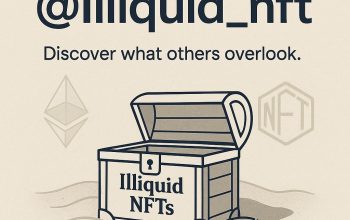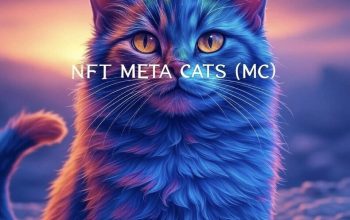The Intersection of Freemasonry, NFTs, and Blockchain Analysis
Unveiling the Mystique
In the digital age, few topics blend history, technology, and intrigue as seamlessly as the intersection of Freemasonry, Non-Fungible Tokens (NFTs), and blockchain analysis. This report explores the methodologies used to investigate these fascinating realms, providing a comprehensive analysis of their findings and implications. From interviews with Freemasons to the aggregation of blockchain data, the journey is both enlightening and engaging.
Methodologies: A Mixed Bag of Approaches
Interviews with Freemasons
Freemasonry, with its ancient rituals and secretive nature, has long captivated the public imagination. By incorporating interviews with Freemasons, this study aims to bridge the gap between ancient traditions and modern digital technologies. These conversations offer unique insights into the symbolic and philosophical underpinnings that might influence the adoption and perception of NFTs and blockchain technology within this community. Understanding these perspectives can reveal how deeply rooted beliefs and practices might intersect with cutting-edge innovations.
Survey Data Collection
Survey data collection is a cornerstone of this methodology. Surveys allow researchers to gather quantitative data from a broad audience, providing a snapshot of public opinion and behavior. By analyzing survey responses, researchers can identify trends, preferences, and attitudes towards NFTs and blockchain technology. This data is invaluable for understanding market dynamics and consumer behavior, which are essential for developing effective strategies and products. For instance, surveys can reveal which demographics are most interested in NFTs and why, helping to tailor marketing efforts and product features to meet their needs.
Analysis of Existing NFT Platforms
The analysis of existing NFT platforms offers a practical perspective on the current state of the market. By examining the functionalities, user experiences, and market performance of various NFT platforms, researchers can identify best practices and areas for improvement. This analysis helps in understanding the technical and operational aspects of NFTs, as well as the economic models that drive their success. For example, platforms like OpenSea and Rarible can be studied to see what features attract users and what challenges they face, providing a roadmap for future developments.
The Role of Blockchain Analysis
Aggregating Blockchain Data
The implementation of a user interface (UI) to aggregate the analysis results of the SORA L2 Blockchain is a significant development. This UI allows for the visualization and interpretation of complex blockchain data, making it accessible to a wider audience. By aggregating data from the SORA L2 Blockchain, researchers can gain insights into transaction patterns, network performance, and security measures. This information is crucial for enhancing the reliability and efficiency of blockchain networks. For instance, understanding transaction patterns can help in identifying bottlenecks and optimizing network performance.
Interactive Shell Scripts for Log Analysis
The development of interactive shell scripts to analyze NGINX logs is another innovative approach. These scripts enable users to extract valuable insights from log data, such as top IPs, paths, status codes, and user agents. By automating the log analysis process, researchers can quickly identify trends and anomalies, improving the overall performance and security of web applications. This method highlights the importance of data-driven decision-making in the digital age. For example, identifying top IPs can help in detecting potential security threats and optimizing server performance.
Case Studies: Real-World Applications
Allocation Analysis in NFT Projects
The allocation analysis of airdrop allocations in NFT projects provides a practical example of how data analysis can be applied in the real world. By examining the distribution of airdrop allocations, researchers can identify patterns and strategies that maximize user engagement and participation. This analysis is particularly relevant for projects like Magic Newton, where early adopters and active community members are rewarded with exclusive roles and benefits. For instance, understanding how airdrops are distributed can help in designing more effective community engagement strategies.
Crypto Asset Forfeiture and Chain Analysis
The training on crypto asset forfeiture and chain analysis offers a unique perspective on the legal and regulatory aspects of NFTs and blockchain technology. By understanding the principles of chain analysis and token metadata, researchers can develop strategies for compliance and risk management. This knowledge is essential for navigating the complex landscape of digital assets and ensuring legal and ethical standards are met. For example, chain analysis can help in tracking the flow of funds and identifying suspicious activities, aiding in regulatory compliance.
The Cultural Influence of Digital Collectibles
Art-Inspired NFTs and Market Expansion
The cultural influence of digital collectibles, particularly art-inspired NFTs, is a growing trend in the market. Projects like $LABUBU are riding a wave of renewed interest in art-driven narratives, attracting new demographics beyond typical NFT buyers. This expansion of the market is driven by the unique storytelling and artistic value that NFTs offer, making them appealing to a broader audience. For instance, art-inspired NFTs can attract art enthusiasts who might not typically engage with digital assets, expanding the market reach.
The Future of Digital Innovation
The intersection of Freemasonry, NFTs, and blockchain analysis presents a fascinating landscape of digital innovation. By employing a mixed bag of methodologies, including interviews, survey data collection, and blockchain analysis, researchers can gain valuable insights into the trends and dynamics of this evolving field. As we continue to explore these realms, the potential for new discoveries and applications is limitless. The future of digital innovation is bright, and the journey promises to be as exciting as it is enlightening. For example, the integration of ancient traditions with modern technology can lead to innovative solutions that bridge the gap between the past and the future.




